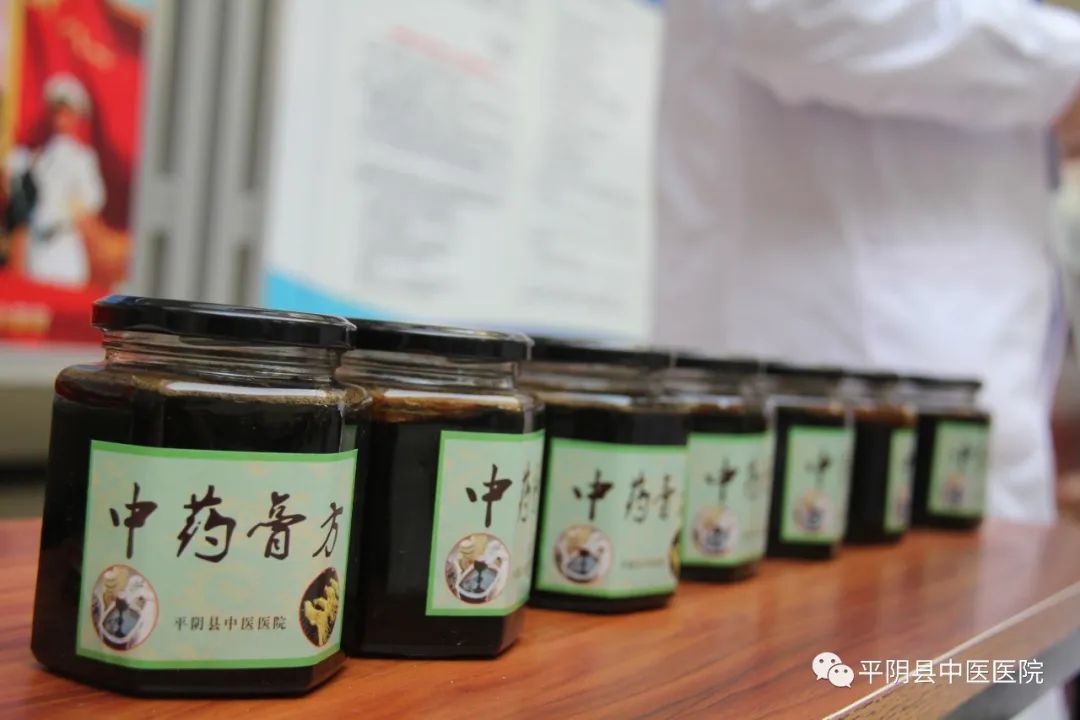Medicinal Paste

Medicinal paste, also known as gāo fāng (膏方), generally consists of around 20 types of Chinese herbs, possessing nourishing properties. The medicinal effects are usually not particularly strong, and the onset of action is relatively slow. There are three methods for taking it: direct consumption, mixed consumption, and sublingual dissolution.

1. Direct Consumption: Take an appropriate amount of the medicinal paste, place it in a cup, and dissolve it with boiling water. Stir until fully melted before consuming.
2. Mixed Consumption: When mixing, you can appropriately add huáng jiǔ (黄酒, yellow rice wine) or some water, and heat it in a bowl or cup using a water bath. After mixing well, consume evenly. Due to the high viscosity of the paste, it can be heated with boiling water until fully melted before consumption.
3. Sublingual Dissolution: Place the medicinal paste in the mouth and let it dissolve slowly before swallowing, which can effectively enhance the medicinal effects. When taking the medicinal paste, you can choose different methods based on personal preference, but it requires a longer time to consume and must strictly follow the dosage prescribed by the doctor. During the consumption period, it is also advisable to drink more warm water and eat fresh vegetables and fruits while avoiding spicy foods.
1. Method of Consumption
When first taking the medicinal paste, it is advisable to take it on an empty stomach in the morning. Take a tablespoon, dissolve it in hot water, and drink it warm. If it is in a bag, take a small package, heat it with boiling water, drink it through a straw, or squeeze it out and dissolve it in hot water. After 3-5 days, if there are no adverse reactions, you can add another dose before dinner, maintaining a twice-daily intake until the medicinal paste is fully consumed.
2. Precautions
1. If you feel gastrointestinal discomfort after taking it on an empty stomach in the morning, you can switch to taking it half an hour after meals.
2. If you still experience discomfort symptoms after taking one tablespoon or one package daily, you can reduce the dosage: take half a tablespoon or half a package, divided into two doses after breakfast and dinner.
3. The medicinal paste should be taken promptly. For some patients who have not finished the medicinal paste after a year, although it is well-preserved, due to possible changes in constitution, it is generally not advisable to continue taking it.
3. Contraindications
1. During the consumption of the medicinal paste, if you encounter acute conditions such as colds, fever, or diarrhea, you should stop taking it and resume only after these symptoms have disappeared.
2. Other dietary restrictions should be based on the nature of the condition, usual constitution, and the properties of the medicinal paste, following medical advice.
4. Storage
The medicinal paste must be stored in the refrigerator. Storage containers should preferably be made of ceramic, glass, or stainless steel with a wide mouth for easy daily access. Currently, small vacuum-sealed plastic packages are also widely used, one package per meal, convenient for carrying, hygienic, with good sealing performance, not prone to spoilage or mold, and with a long storage time.
5. Common Issues and Solutions
1. Mold: The medicinal paste can easily become moldy during use or improper storage. The spoon used to scoop the paste should be fixed, cleaned, dried, and disinfected before use. Avoid bringing moisture into the container when scooping. After taking the paste, do not leave the spoon in the container. You can also take out a three-day supply into a smaller container to avoid contamination from multiple uses. If the surface of the paste has mold spots, you can remove the top layer, boil the remaining part, or steam it in a water bath, then cool and store it in the refrigerator. Generally, small vacuum-sealed plastic packages do not have these mold issues.
2. Sugar Return: The granular phenomenon, known as “sugar return,” occurs when the sugar in the medicinal paste separates from the medicinal juice, causing sugar crystallization. This is not spoilage and can be used safely.
3. Aging: This refers to the paste becoming too old or overly thick and hard. If the paste solidifies into a block as hard as stone, it becomes difficult to scoop. This is often seen in animal gelatin, mainly due to excessive use of gelatinous herbs or excessive evaporation of moisture during the paste-making process. In warmer winters, the paste is often cooked too long to reduce moisture and prevent spoilage. The solution is to heat the paste when scooping and use a clean, dry spoon.

-The End-
Contributed by: Li Yang
Edited by: Sun Ying
Reviewed by: Yin Wei
Supervised by: Wan Zhaoyu

